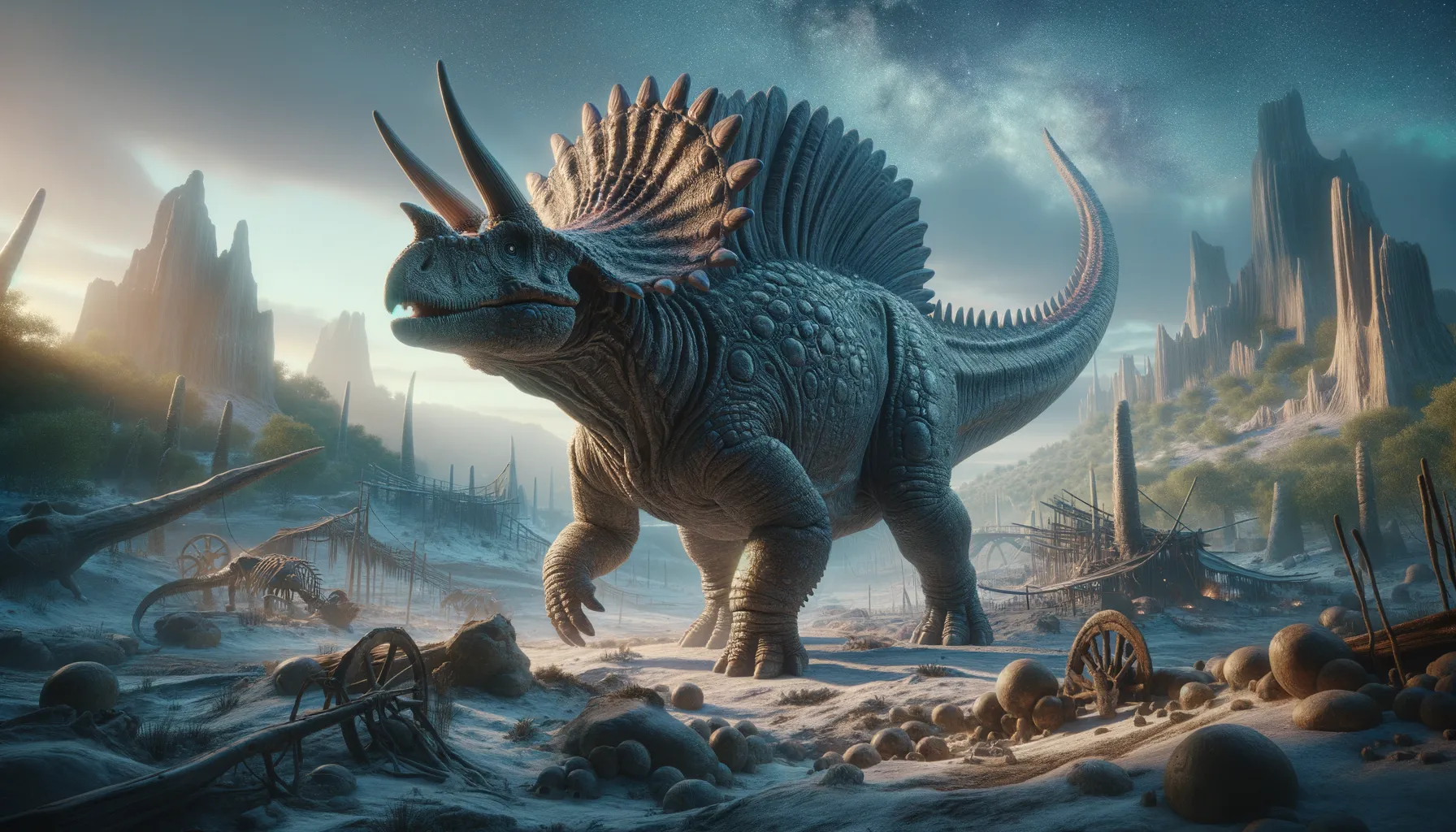
Hungarosaurus
Armored strength from the age of giants.
Period
Cretaceous
Length
Roughly 4 meters (13 feet) long.
Height
About 1.3 meters (4.3 feet) tall.
Weight
Approximately 1,000 kg (2,200 lbs).
Hungarosaurus is a genus of armored dinosaur that lived during the Cretaceous period in what is now Hungary. It was part of the ankylosaur family, known for their heavy armor and club-like tails. These dinosaurs moved slowly on four legs and fed primarily on plants. As a heavily protected herbivore, it likely used its armor as a defense mechanism against predators of the era.
Diet
Hungarosaurus was an herbivore, feeding mainly on low-lying plants. Its beak-like mouth was adapted to clip vegetation, and it likely consumed a variety of ferns and other prehistoric flora.
Hunting
As a herbivore, Hungarosaurus did not hunt other animals. Instead, it likely spent much of its time foraging for plants and using its keen sense of smell to locate food sources.
Environmental challenges
Hungarosaurus faced challenges such as avoiding predators and competing for food with other herbivores. Its armor was a significant advantage in protecting against carnivorous threats. During droughts or cooler periods, food scarcity could become an issue, impacting its survival and reproduction.
Speed
Relatively slow due to its heavy build.
Lifespan
Estimated to live several decades.
First discovery
Hungarysaurus was first discovered in Hungary in 2000.
Fun Facts
- Hungarosaurus is a dinosaur that lived about 85 million years ago during the Late Cretaceous period.
- It was an armored dinosaur, part of the ankylosaur family, with bony plates protecting its body.
- Fossils of Hungarosaurus have been found in what is now Hungary, giving the dinosaur its name.
- Unlike some other ankylosaurs, Hungarosaurus didn't have a clubbed tail.
- It was a herbivore, meaning it primarily fed on plants and vegetation.
- Hungarosaurus was relatively small for ankylosaurs, estimated to be about 16 feet long.
- Its name, Hungarosaurus, means 'Hungarian lizard', highlighting the location of its discovery.
Growth and Development
Hungarosaurus grew relatively slowly, reaching adult size over several years. Juveniles were more vulnerable to predators and relied heavily on staying close to adults for protection. Its development likely included thickening of its armor as it matured.
Habitat
Hungarosaurus inhabited lush plains and forests in what is now modern-day Hungary. The region was part of a warm, subtropical environment with plenty of vegetation to support its diet. Proximity to water sources like rivers allowed them to stay hydrated and maintain their diet year-round.
Interaction with other species
Hungarosaurus coexisted with various other dinosaur species, including herbivores and carnivores. It likely maintained a defensive posture when predators were near, relying on its tough exterior for protection. Herbivore interactions might have included competition for resources, but they generally lived peacefully in groups.
Natural lifespan
Hungarosaurus likely had a lifespan of several decades.
Reproduction
Hungarosaurus likely laid eggs in nests built in soft soil or sand. Parents might have guarded the nests to protect them from predators, though specifics of parental care remain unclear. Hatchlings were likely precocial, meaning they could move around soon after birth.
Social behaviour
Hungarosaurus possibly lived in small groups or family units, providing better protection against predators. Social interactions might have involved simple communication, like body postures or vocalizations to signal danger or to maintain group cohesion.
Fossil locations
Fossils of Hungarosaurus have primarily been found in the Iharkút locality of Hungary. This site has provided a wealth of information about various dinosaur species of the Cretaceous period. The fossils were well-preserved, allowing paleontologists to gain insights into its anatomy and lifestyle.
